Have you ever wondered how to tell if your turtle has internal parasites? It’s a common concern for turtle owners, and knowing how to recognize and treat these parasites is important for the health and well-being of your little shelled friend. In this article, we’ll discuss the signs and symptoms of common internal parasites in turtles and how you can effectively treat them. So, let’s dive right in and learn more!
First and foremost, it’s essential to keep an eye out for any changes in your turtle’s behavior and appearance. If you notice that your turtle has become lethargic, has a loss of appetite, or is exhibiting weight loss, these could be signs of internal parasites. Additionally, you may observe diarrhea, abnormal feces, or an unusually swollen abdomen. These symptoms indicate that your turtle may be infected with internal parasites, such as worms or protozoa. Don’t worry, though! In the upcoming article, we’ll explore the different types of internal parasites that can affect turtles and provide you with treatment options to help your little buddy feel better in no time.
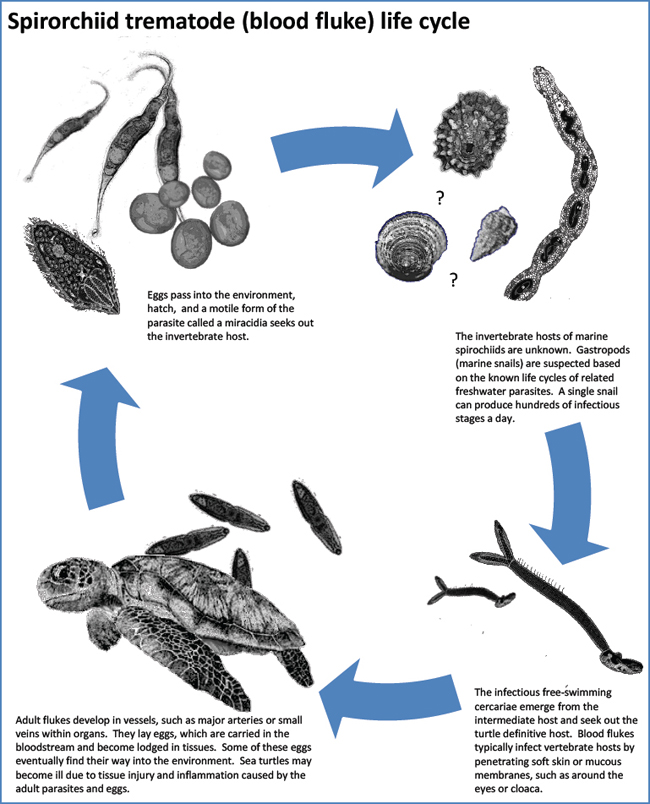
What Are Internal Parasites in Turtles?
Internal parasites are organisms that live and thrive inside the bodies of turtles. These parasites can include various types of worms, such as roundworms, tapeworms, and hookworms, as well as protozoan parasites. While some internal parasites may not cause immediate harm to turtles, others can lead to serious health issues if left untreated.
Understanding the concept of internal parasites
Internal parasites are commonly found in turtles, especially those living in the wild. These parasites can enter the turtle’s body through various means, such as ingesting contaminated food or water or coming into contact with infected animals or environments. Once inside, these parasites can multiply and thrive, causing damage to the turtle’s organs and overall well-being.
Different types of internal parasites in turtles
There are several different types of internal parasites that can infect turtles. Some of the most common types include:
-
Roundworms (Nematodes): These worms can infect the intestines and other organs of turtles, causing weight loss, diarrhea, and anemia.
-
Tapeworms (Cestodes): Tapeworms are flat, segmented worms that can attach themselves to the intestines of turtles. They can cause digestive issues and nutrient deficiencies.
-
Hookworms (Ancylostoma spp.): Hookworms are small parasites that hook themselves onto the intestinal walls of turtles. They can cause anemia and weak immune system function.
-
Protozoan parasites: These microscopic parasites can infect various organs of turtles, including the digestive system, liver, and blood. They can lead to symptoms such as diarrhea, weakness, and organ failure.
Recognizing Internal Parasite Infections
It is important for turtle owners to be able to recognize the signs of internal parasite infections in their pets. Detecting these infections early can help prevent further complications and ensure timely treatment.
Observable symptoms of internal parasite infections in turtles
Some common symptoms of internal parasite infections in turtles include:
- Weight loss or failure to gain weight
- Diarrhea or changes in bowel movements
- Lack of appetite or reduced food intake
- Weakness or lethargy
- Swollen or distended abdomen
- Anemia (pale gums or skin)
- Discoloration or abnormal appearance of feces or urine.
If you notice any of these symptoms in your turtle, it is important to consult a veterinarian for proper diagnosis and treatment.
Behavioral changes indicating the presence of internal parasites
In addition to physical symptoms, turtles with internal parasite infections may exhibit certain behavioral changes. These can include:
- Restlessness or agitation
- Excessive scratching or rubbing against surfaces
- Aggression towards other turtles or animals
- Hiding or isolating themselves
- Abnormal or frantic swimming patterns.
If you observe any of these behavioral changes in your turtle, it is crucial to have them examined by a veterinarian to rule out the presence of internal parasites.
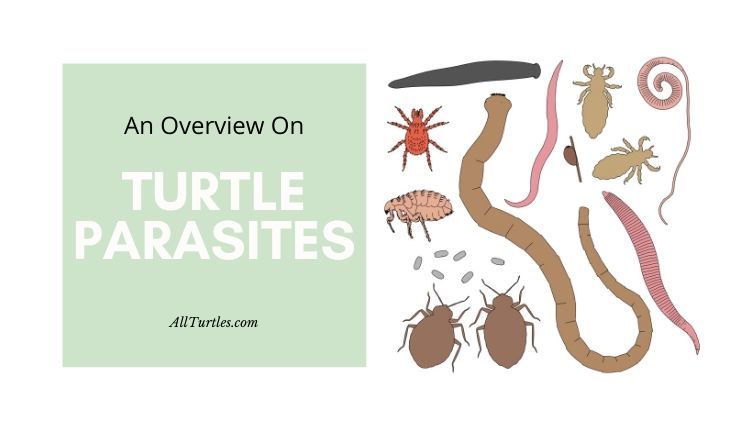
Diagnostic Techniques for Detecting Internal Parasites
In order to confirm the presence of internal parasites in turtles, veterinarians may use various diagnostic techniques. These tests can help identify the specific type of parasite and determine the most appropriate treatment plan.
Fecal examination for identifying internal parasites
One of the most common methods for detecting internal parasites in turtles is through a fecal examination. This involves collecting a small sample of the turtle’s feces and examining it under a microscope. The veterinarian will look for the presence of parasite eggs, larvae, or adult worms in the fecal sample.
Fecal examinations can provide valuable information about the type and severity of the parasite infection, allowing veterinarians to develop an effective treatment approach.
Other diagnostic methods used to detect internal parasites
In addition to fecal examinations, veterinarians may utilize other diagnostic methods to detect internal parasites in turtles. These can include blood tests, imaging techniques such as X-rays or ultrasounds, or even invasive procedures like endoscopy or surgery to directly visualize and remove parasites.
The specific diagnostic method used will depend on the suspected type of parasite and the individual turtle’s condition.
Common Internal Parasites in Turtles
Various types of internal parasites can affect turtles, and it is important for turtle owners to be aware of the most common ones.
Overview of common internal parasites found in turtles
Some of the most common internal parasites found in turtles include:
-
Roundworms (Nematodes): Roundworms are among the most frequently encountered internal parasites in turtles. They can infect the intestines, liver, and other organs, leading to various health issues.
-
Tapeworms (Cestodes): Tapeworms are flat worms that can attach themselves to the intestines of turtles. Common tapeworms include the genus Oochoristica and Dipervifrontonia. These parasites can cause significant damage to the turtle’s intestinal lining and interfere with nutrient absorption.
-
Hookworms (Ancylostoma spp.): Hookworms are small, blood-sucking parasites that can attach themselves to the intestinal lining of turtles. They can cause anemia and weaken the turtle’s immune system, making it more susceptible to other infections.
-
Protozoan parasites: Protozoan parasites, such as Entamoeba and Tritrichomonas, can infect the digestive system, liver, and blood of turtles. These parasites can lead to symptoms such as diarrhea, weakness, and organ failure.
Characteristics and life cycle of each common internal parasite
Each type of internal parasite has its own unique characteristics and life cycle. Understanding these aspects can help veterinarians and turtle owners develop appropriate treatment and prevention strategies.
-
Roundworms (Nematodes): Roundworms are cylindrical in shape and can vary in size, from a few centimeters to several inches long. They have complex life cycles that involve multiple internal and external hosts. Turtles can become infected by ingesting the eggs or larvae of roundworms, usually through contaminated food or water.
-
Tapeworms (Cestodes): Tapeworms are flat and segmented, with each segment containing reproductive organs. They can range in size from a few millimeters to several meters long. Turtles can acquire tapeworm infections by ingesting infected intermediate hosts, such as insects or small vertebrates.
-
Hookworms (Ancylostoma spp.): Hookworms are small, thin worms that have hook-like mouthparts. They can attach themselves to the intestinal lining of turtles and suck blood. Turtles can become infected with hookworms by ingesting the larvae or through direct skin penetration.
-
Protozoan parasites: Protozoan parasites are single-celled organisms that can infect various organs of turtles. They can be transmitted through contaminated food or water, as well as direct contact with infected individuals or environments.
Understanding the characteristics and life cycles of these common internal parasites is essential for effective diagnosis and treatment. Veterinarians can use this knowledge to develop targeted treatment plans specific to each parasite type.
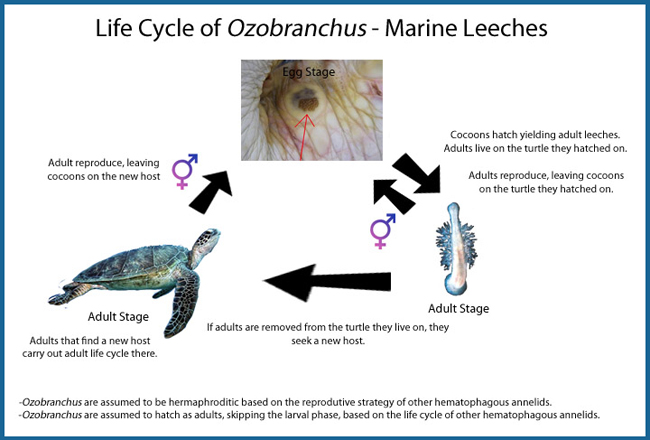
Health Risks Posed by Internal Parasites
Internal parasite infections can have significant health risks for turtles if left untreated. These risks can affect various aspects of the turtle’s health and well-being.
Effects of internal parasites on turtle health and well-being
Internal parasite infections can have a wide range of effects on turtle health. Some of the most common health issues associated with internal parasites include:
-
Malnutrition: Internal parasites can interfere with the turtle’s ability to absorb nutrients from food, leading to malnutrition and nutrient deficiencies.
-
Organ damage: Parasites can cause damage to the turtle’s organs, such as the intestines, liver, and blood vessels. This damage can impair organ function and lead to further complications.
-
Weak immune system: Parasite infections can weaken the turtle’s immune system, making it more susceptible to other infections and diseases.
-
Anemia: Certain parasites, such as hookworms, can cause blood loss in turtles, leading to anemia and weakness.
Potential complications associated with untreated internal parasite infections
If left untreated, internal parasite infections in turtles can lead to severe complications and even death. Some potential complications associated with untreated internal parasite infections include:
-
Dehydration: Diarrhea, a common symptom of internal parasite infections, can lead to dehydration if left untreated.
-
Intestinal obstruction: Severe infestations of roundworms or tapeworms can cause intestinal blockages in turtles, leading to further health issues.
-
Septicemia: Invasive parasitic infections can lead to systemic infections, such as septicemia, which can be life-threatening to turtles.
-
Organ failure: Prolonged and severe internal parasite infections can cause organ failure, leading to a decline in the overall health and well-being of the turtle.
It is crucial to seek veterinary help if you suspect your turtle has an internal parasite infection. Early diagnosis and treatment can significantly improve the chances of a successful recovery and minimize the risk of complications.
Preventing Internal Parasite Infections in Turtles
Prevention is key when it comes to internal parasite infections in turtles. By implementing effective preventive strategies, turtle owners can reduce the risk of their pets contracting these infections.
Effective strategies for preventing internal parasite infections
To prevent internal parasite infections in turtles, consider the following strategies:
-
Quarantine new turtles: Whenever you introduce a new turtle into your collection, it is essential to quarantine them for a period of time before placing them with other turtles. This allows you to monitor their health and prevent any potential infections from spreading to the rest of the group.
-
Provide clean water and food: Ensure that your turtles have access to clean and uncontaminated water and food. Regularly clean and disinfect their habitat and feeding areas to minimize the risk of exposure to parasite eggs or larvae.
-
Avoid feeding live prey: Live prey, such as insects or small vertebrates, can carry internal parasites. Instead, opt for commercially produced and properly prepared feed for your turtles to reduce the risk of parasite transmission.
-
Practice good hygiene: Wash your hands thoroughly after handling your turtles or cleaning their habitat. This helps prevent the potential spread of parasites from the turtles to humans or other animals.
Proper hygiene and habitat management for parasite prevention
Maintaining proper hygiene and habitat management is crucial for preventing internal parasite infections in turtles. Some key practices to follow include:
-
Regular cleaning: Clean the turtle’s habitat regularly, removing any feces, uneaten food, or other waste materials. Use appropriate cleaning solutions and disinfectants to kill any potential parasites or their eggs.
-
Water filtration and treatment: Install a reliable water filtration system in your turtle’s enclosure to ensure clean and safe water. Treat the water with appropriate disinfectants or dechlorinating agents to eliminate parasites and other harmful contaminants.
-
Quarantine and medical screening: Before introducing new turtles to an existing group, quarantine them for a period of time and have them thoroughly examined by a veterinarian to ensure they are free from parasites and other infections.
By following proper hygiene practices and maintaining a clean and healthy habitat for your turtles, you can significantly reduce the risk of internal parasite infections.
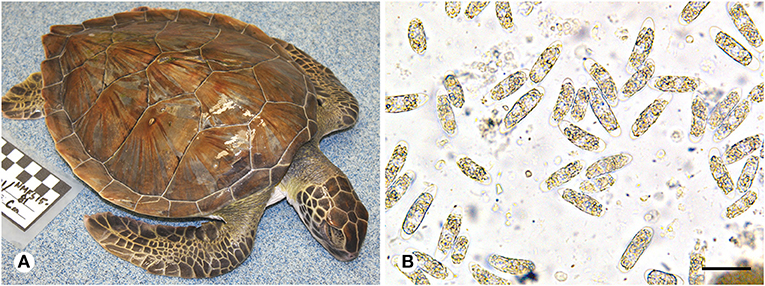
Treatment Options for Internal Parasites in Turtles
If your turtle is diagnosed with an internal parasite infection, appropriate treatment is essential to eliminate the parasites and restore their health.
Overview of different treatment methods for internal parasites
The treatment method for internal parasite infections in turtles will depend on the specific type of parasite and the severity of the infection. Some common treatment options include:
-
Medications: Veterinarians may prescribe various medications to kill the internal parasites. These can include dewormers or anti-protozoal drugs, such as fenbendazole or Praziquantel. The dosage and duration of treatment will be determined by the veterinarian based on the individual turtle’s condition.
-
Supportive care: In cases where the turtle’s health has been significantly affected by the parasite infection, supportive care measures may also be necessary. This can include providing fluids, nutritional support, and medications to alleviate symptoms and aid in the recovery process.
Medications commonly used to eliminate internal parasites
Several medications are commonly used to eliminate internal parasites in turtles. These medications are prescribed by veterinarians and should only be administered as directed. Some commonly used drugs include:
-
Fenbendazole: This broad-spectrum dewormer is effective against roundworms and hookworms. It works by disrupting the parasites’ ability to absorb nutrients, leading to their death.
-
Praziquantel: Praziquantel is commonly used to treat tapeworm infections in turtles. It works by damaging the parasite’s outer covering, causing it to disintegrate and be eliminated from the turtle’s body.
-
Metronidazole: This antibiotic is often used to treat protozoan infections in turtles. It works by inhibiting the growth and reproduction of the parasites, allowing the turtle’s immune system to eliminate them.
It is important to carefully follow the veterinarian’s instructions regarding medication administration, dosage, and duration. Improper dosing or premature discontinuation of treatment can result in ineffective parasite elimination or the development of drug resistance.
Administering Medications to Turtles
Administering medications to turtles can be challenging, but with proper techniques and considerations, it can be done safely and effectively.
Proper techniques and considerations for administering medications to turtles
Consider the following techniques and considerations when administering medications to turtles:
-
Consult a veterinarian: Before administering any medications, consult with a veterinarian for proper diagnosis and treatment advice. They can guide you on the specific medication and dosage suitable for your turtle’s condition.
-
Proper handling: Handle your turtle gently and securely to minimize stress and ensure safe medication administration. It may be helpful to have an extra person assist in restraining the turtle during the process.
-
Medication form: Most medications for turtles come in liquid or pill form. Liquid medications can be mixed with food or water, while pills may need to be crushed and mixed with a small amount of food. Ensure that the medication is evenly distributed and consumed entirely by the turtle.
-
Masking the taste: Some medications may have an unpleasant taste, which can make it challenging to get the turtle to consume them. Consider mixing the medication with a small amount of a flavorful food that the turtle enjoys to mask the taste.
Dosage guidelines and potential side effects
Dosage guidelines for medications vary depending on the specific drug and the turtle’s size and condition. It is essential to consult a veterinarian for the correct dosage and frequency of administration.
It is also important to be aware of potential side effects that may accompany medication use. Common side effects can include temporary loss of appetite, digestive upset, or changes in behavior. If you observe any concerning side effects, contact your veterinarian for further guidance.
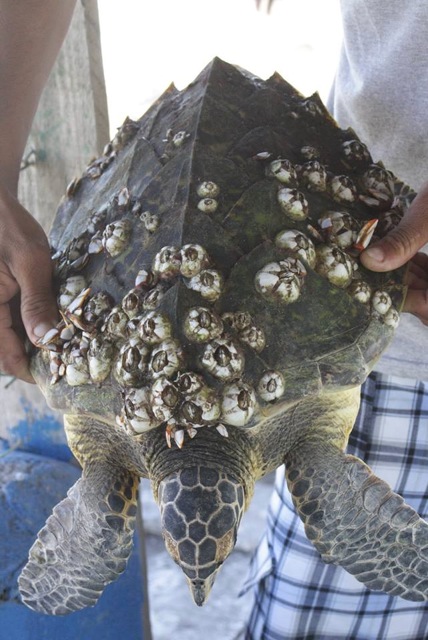
Natural Remedies for Treating Internal Parasites
While medications are the most commonly prescribed treatment for internal parasites in turtles, some natural remedies may also help support the treatment process.
Alternative options for treating internal parasites without medications
It is important to note that natural remedies should not be used as a substitute for appropriate veterinary care. However, some natural remedies may complement medical treatment and support the overall health of the turtle. These can include:
-
Garlic: Adding small amounts of fresh garlic to the turtle’s diet may help repel certain parasites. Garlic has natural antiparasitic properties and can also enhance the turtle’s immune system.
-
Probiotics: Probiotic supplements, containing beneficial bacteria, can help support the turtle’s digestive health and strengthen the immune system. These can be particularly helpful during and after a parasitic infection.
-
Herbal remedies: Certain herbs, such as wormwood or black walnut hulls, are believed to have antiparasitic properties. However, it is essential to consult a veterinarian before using any herbal remedies, as some may be toxic to turtles or interact with medications.
Natural remedies can be used in conjunction with conventional treatment, but their effectiveness may vary. Always consult a veterinarian before using any natural remedies to ensure they are safe and appropriate for your turtle.
Post-Treatment Care for Turtles with Internal Parasites
After treating internal parasite infections in turtles, it is crucial to provide appropriate post-treatment care to support their recovery and minimize the risk of reinfection.
Recovery tips and supportive care measures for turtles after parasite treatment
Consider the following tips and supportive care measures for turtles after parasite treatment:
-
Monitor closely: Keep a close eye on your turtle’s behavior, appetite, and overall health. Report any changes or concerns to your veterinarian immediately.
-
Maintain proper hygiene: Continue to practice good hygiene by regularly cleaning the turtle’s habitat and providing clean water and food. This helps prevent reinfection and the spread of parasites.
-
Provide a balanced diet: Ensure that your turtle receives a balanced and nutritious diet to support their recovery and overall health. Consult a veterinarian or reptile nutrition specialist for guidance on the appropriate diet for your turtle.
-
Follow-up examinations: Schedule follow-up examinations with your veterinarian to monitor the turtle’s progress and ensure the parasites have been successfully eliminated. These examinations may involve repeat fecal tests or additional diagnostic tests, if necessary.
It is essential to provide ongoing care and monitoring for your turtle after parasite treatment. This helps ensure a complete recovery and reduces the risk of recurrence or complications.
Common Misconceptions about Internal Parasites in Turtles
There are several common misconceptions surrounding internal parasites in turtles. It is important to address these misconceptions to promote accurate understanding and appropriate care for these reptiles.
Addressing common myths and misunderstandings about internal parasites
Here are some common myths and misunderstandings about internal parasites in turtles:
-
Myth: Turtles cannot get internal parasites. Fact: Internal parasites are common in turtles, especially those living in the wild or in suboptimal conditions. Regular veterinary check-ups and fecal examinations are essential to detect and treat these infections.
-
Myth: Internal parasites are not harmful to turtles. Fact: While some internal parasites may not cause immediate harm, others can lead to serious health issues if left untreated. It is important to seek veterinary care if you suspect your turtle has an internal parasite infection.
-
Myth: Internal parasites can be easily eliminated with over-the-counter treatments. Fact: Effective treatment of internal parasites requires proper diagnosis and prescription medications. Over-the-counter treatments may not be effective against specific parasite types or may lead to improper dosage and treatment failure.
-
Myth: Once treated, turtles will not get reinfected with internal parasites. Fact: Turtles can become reinfected with internal parasites if proper preventive measures are not implemented. Regular veterinary care, proper hygiene practices, and habitat management are necessary to reduce the risk of reinfection.
By addressing these common myths and providing accurate information, turtle owners can ensure the well-being and proper care of their pets.
Educating Turtle Owners about Internal Parasites
Educating turtle owners about internal parasites is crucial for promoting responsible turtle ownership and preventing parasite-related health issues.
Importance of educating turtle owners about internal parasites
By educating turtle owners about internal parasites, we can:
-
Increase awareness: Many turtle owners may not be aware of the risks and prevalence of internal parasites in turtles. Educating them about these parasites helps them make informed decisions regarding their pet’s care.
-
Promote preventive measures: Knowledge about internal parasites can empower turtle owners to implement effective hygiene practices, habitat management, and preventive treatments to reduce the risk of infections.
-
Encourage regular veterinary check-ups: Education about internal parasites encourages turtle owners to seek regular veterinary care, which is essential for early detection, diagnosis, and treatment of parasite infections.
Guidelines for responsible turtle ownership and parasite prevention
To encourage responsible turtle ownership and parasite prevention, consider the following guidelines:
-
Regular veterinary check-ups: Schedule regular check-ups with a veterinarian who specializes in reptile care. These check-ups should include fecal examinations to detect and treat internal parasite infections.
-
Proper habitat management: Ensure that your turtle’s habitat is clean, well-maintained, and provides appropriate temperature, humidity, and lighting conditions. This helps minimize stress and reduce the risk of internal parasite infections.
-
Hygiene practices: Practice good hygiene by washing your hands thoroughly after handling your turtle or cleaning their habitat. Avoid cross-contamination by using separate equipment, such as feeding utensils, for each turtle.
-
Responsible sourcing: Obtain turtles from reputable sources that prioritize the health and welfare of their animals. Quarantine new turtles before introducing them to an existing group to prevent the spread of infections.
By following these guidelines and staying informed about internal parasites in turtles, owners can provide the best possible care for their pets.
Conclusion
Understanding and recognizing common internal parasites in turtles is essential for their overall health and well-being. By familiarizing yourself with the signs of internal parasite infections and seeking veterinary care, you can ensure timely treatment and prevent complications.
Remember to practice good hygiene, maintain a clean habitat, and provide a balanced diet to reduce the risk of internal parasite infections in your turtle. Regular veterinary check-ups and fecal examinations are crucial for early detection and effective treatment.
By educating yourself and others about internal parasites and responsible turtle ownership, you can promote the health and happiness of turtles everywhere. Seek veterinary help if you suspect your turtle has an internal parasite infection, and remember that prevention is always better than treatment.